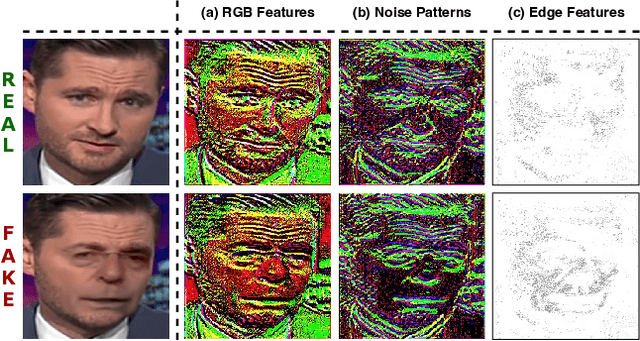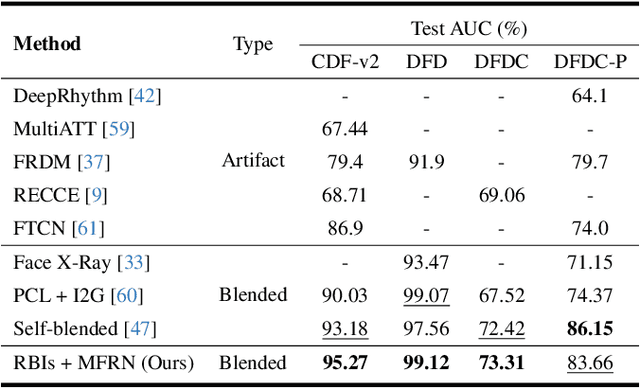ZhiYong Zhang
Generalized Deepfakes Detection with Reconstructed-Blended Images and Multi-scale Feature Reconstruction Network
Dec 13, 2023



Abstract:The growing diversity of digital face manipulation techniques has led to an urgent need for a universal and robust detection technology to mitigate the risks posed by malicious forgeries. We present a blended-based detection approach that has robust applicability to unseen datasets. It combines a method for generating synthetic training samples, i.e., reconstructed blended images, that incorporate potential deepfake generator artifacts and a detection model, a multi-scale feature reconstruction network, for capturing the generic boundary artifacts and noise distribution anomalies brought about by digital face manipulations. Experiments demonstrated that this approach results in better performance in both cross-manipulation detection and cross-dataset detection on unseen data.
Face Forgery Detection Based on Facial Region Displacement Trajectory Series
Dec 07, 2022



Abstract:Deep-learning-based technologies such as deepfakes ones have been attracting widespread attention in both society and academia, particularly ones used to synthesize forged face images. These automatic and professional-skill-free face manipulation technologies can be used to replace the face in an original image or video with any target object while maintaining the expression and demeanor. Since human faces are closely related to identity characteristics, maliciously disseminated identity manipulated videos could trigger a crisis of public trust in the media and could even have serious political, social, and legal implications. To effectively detect manipulated videos, we focus on the position offset in the face blending process, resulting from the forced affine transformation of the normalized forged face. We introduce a method for detecting manipulated videos that is based on the trajectory of the facial region displacement. Specifically, we develop a virtual-anchor-based method for extracting the facial trajectory, which can robustly represent displacement information. This information was used to construct a network for exposing multidimensional artifacts in the trajectory sequences of manipulated videos that is based on dual-stream spatial-temporal graph attention and a gated recurrent unit backbone. Testing of our method on various manipulation datasets demonstrated that its accuracy and generalization ability is competitive with that of the leading detection methods.
 Add to Chrome
Add to Chrome Add to Firefox
Add to Firefox Add to Edge
Add to Edge